 You're going burgling again, aren't you? Don't lie to me, buster. I always know the signs. 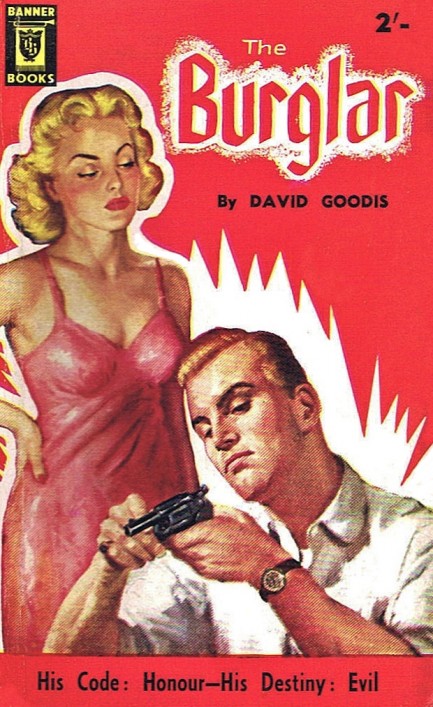
David Goodis's novel The Burglar is one of our recent favorites. Above is a nice edition from Banner Books, which we gather was a British sub-imprint of Lion Books, but one that must not have been around long, since we can't locate any mention of it except in the seller's auction. Indeed, the vendor could simply be wrong. It happens. The art on this is uncredited. You can read our rave of the novel here. Update: the May 1955 cover of Justice you see below is attributed to Julian Paul, so that solves the mystery of The Burglar.
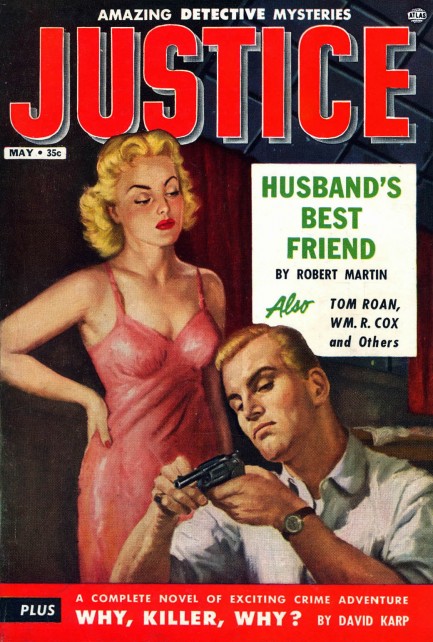
 Nightfall is the time when desperate men commit desperate acts. 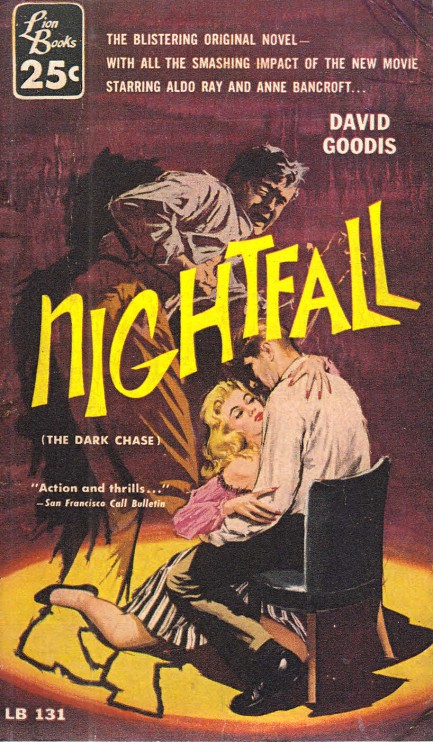
David Goodis was one of the mid-century era's most successful crafters of crime fiction. Movies based on his books include Dark Passage, the visually dazzling 1983 French film La lune dans le caniveau (The Moon in the Gutter), and the brilliant thriller The Burglar. His drama Nightfall, aka The Dark Chase, tells the story of a man who stumbles upon bank robbers, comes into possession of their loot, but loses it in a wild panic while fleeing a shooting. Months later and many states away, he's trying to make a new life but soon learns cops are trailing him trying to solve the robbery, and the surviving bank robbers have surfaced to demand the cash. He'd better find it or he's mega-screwed, but he literally can't remember what happened to it. He's blacked it out. Like other Goodis novels Nightfall became a movie, though it's hard to see cinema in it when you read it. But Jacques Tourneur had no issues, crafting a 1956 film noir starring Aldo Ray and Anne Bancroft. For us the novel, with its hallucinatory nature and quasi-amnesiac protagonist, wasn't a top thriller, but it was satisfying enough. This Lion Books edition came in 1956 with uncredited cover art.
 Mansfield and her crew try to steal a million. 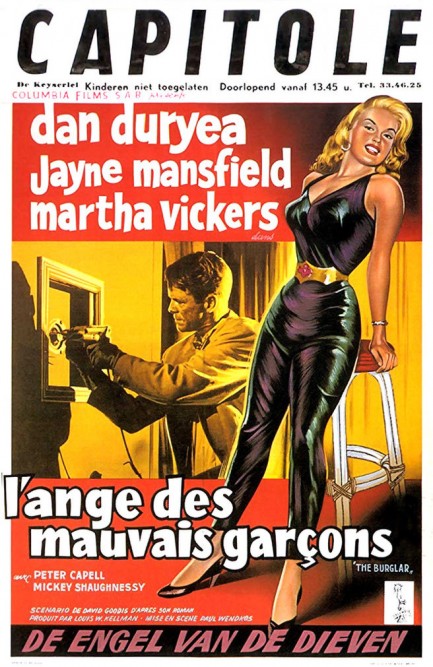
This fantastic Belgian poster with lettering in French and Dutch was made for the 1957 film noir L'Ange des mauvais garçons, better known as The Burglar. Well, better known is relative. The movie is somewhat obscure but it shouldn't be—it's a film noir clinic, and this great promo, which was made for its run at the Ciné Capitole in Antwerp, befits such an artful movie. It's unsigned, so the creator will have to remain unrecognized for now. Conversely, we think the movie will garner more recognition as time passes. Jayne Mansfield co-stars but don't get your hopes up—she doesn't wear a black jumpsuit. Not even close. You can read more about the movie here.
 These thieves will probably steal the entire film festival. 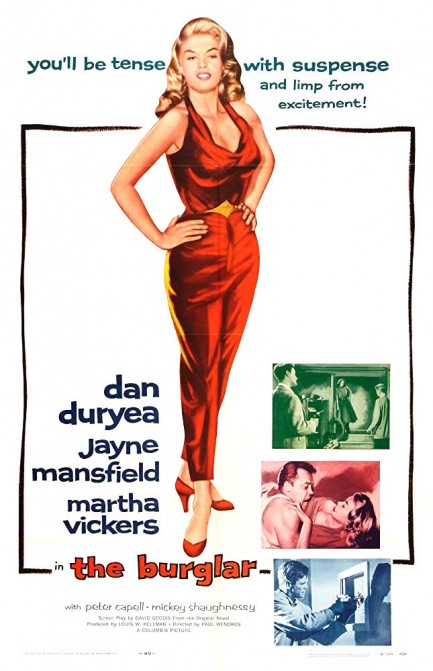
This poster for the 1957 film noir The Burglar looks pretty low rent, doesn't it? The movie is modestly budgeted too, but money isn't everything when it comes to making art. The film, which plays at Noir City tonight, opens with a nocturnal suburban heist that leaves a trio of break-in artists headed by Dan Duryea with a gaudy piece of $150,000 jewelry they can't hope to fence until the heat goes down. That means they have to wait, and with this mismatched group that means the pressure goes up. There's a fourth person in the mix. Jayne Mansfield, star of the promo poster, is the crew's eyes and ears, casing places they want to rob. The Burglar is an early role for Mansfield, coming three years into her career, but it also arrived in cinemas a year after the big Twentieth Century Fox musical comedy The Girl Can't Help It, which featured her in full sex kitten mode, with the corset-crunched hourglass figure and helium voice. The irony is The Burglar was actually filmed before The Girl Can't Help It, but Mansfield's milieu had been set in stone by Fox's expensive hit. The Burglar challengingly asks her to be by turns innocent, tough, frustrated, terrified, and vulnerable. Basically, it asks too much this early in her career. But she gets by far the best line, when asked by Duryea at one point why she's being so fickle and difficult:
“You don't know? You really don't know? Well look at me! I'm a woman! I'm flesh and blood and I've got feelings!”
That one might bring the house down. A better actress might have nailed this dialogue, which was written by David Goodis working from his own novel, but as delivered by Mansfield the bit is funny, and actually goes on to hit other comedic notes. Though The Burglar demanded too 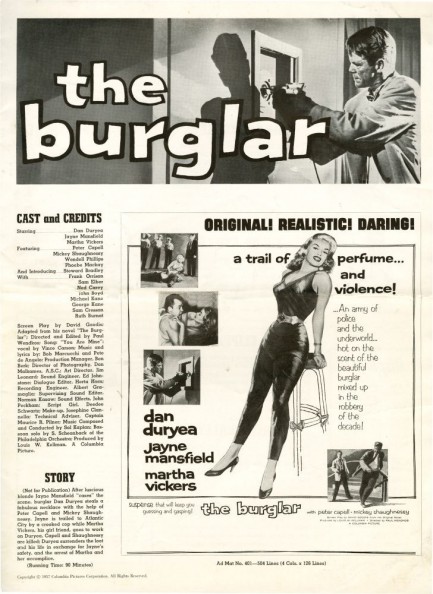 much of the inexperienced Mansfield, she hurts the final product little, because the movie comes across like a sneaky parody anyway. With one partner in Mickey Shaughnessy who's creepy and rapey, and another in Peter Capell who's as highly strung as a banjo, head crook Duryea has assembled by far the worst gang in film noir history. There's no thought—not even for a second—that these three are going to achieve their goals. much of the inexperienced Mansfield, she hurts the final product little, because the movie comes across like a sneaky parody anyway. With one partner in Mickey Shaughnessy who's creepy and rapey, and another in Peter Capell who's as highly strung as a banjo, head crook Duryea has assembled by far the worst gang in film noir history. There's no thought—not even for a second—that these three are going to achieve their goals. But the movie is 190 proof noir—a knock-you-on-your-ass cocktail of nearly everything cool about the form. You get voiceover, flashback, nightmares, a loyal good girl led astray plus a femme fatale played by Martha Vickers, outrageous shadows, angular framing, hard-boiled dialogue, one crooked-as-fuck cop, a brassy, jazzy score, and beautiful night-for-night location work from director Paul Wendkos and cinematographer Don Malkames. And as bonuses you get a funhouse scene that's pure genius, and a high diving horse. The Burglar is sure to please all fans of old movies, but for noir lovers and lucky Noir City attendees in particular, it's nothing less than a landmark. You can learn a bit more about the film in the post below. 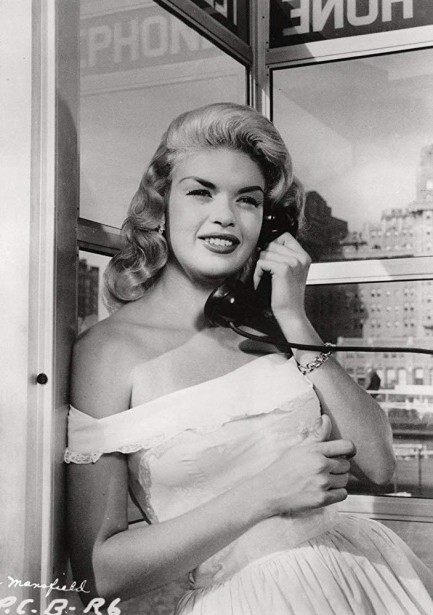 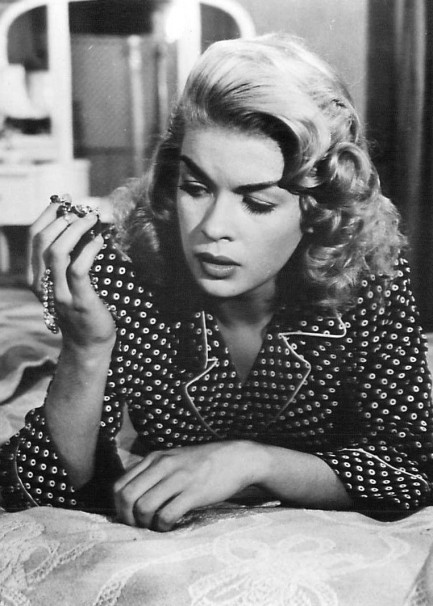 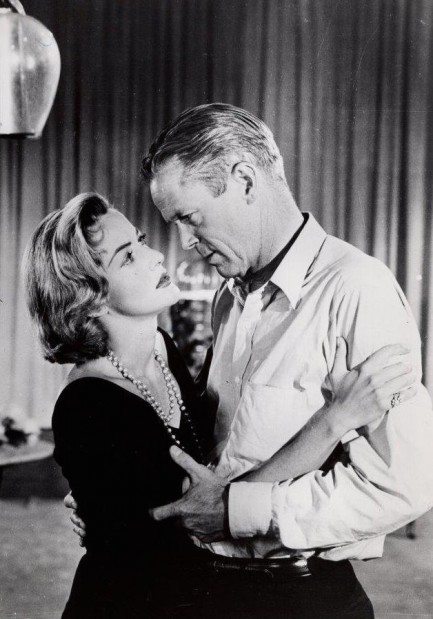 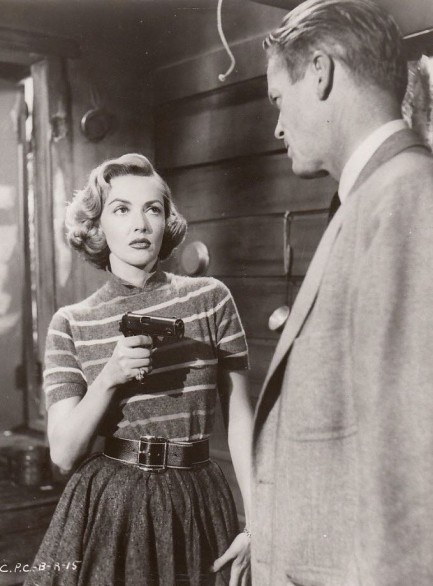 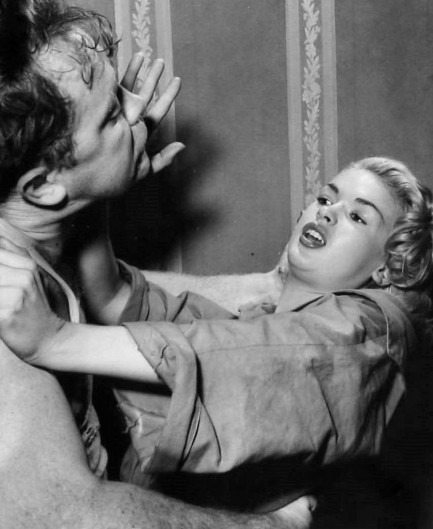 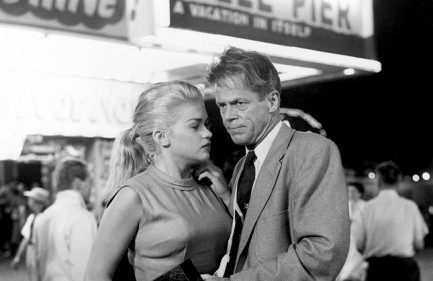 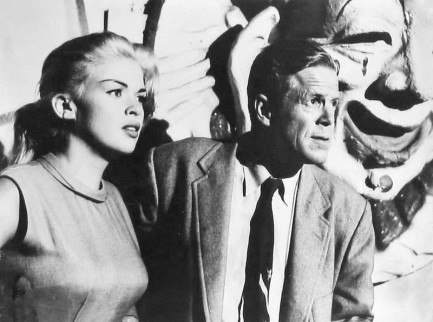
 There's no amount of loot that can fill an empty soul. 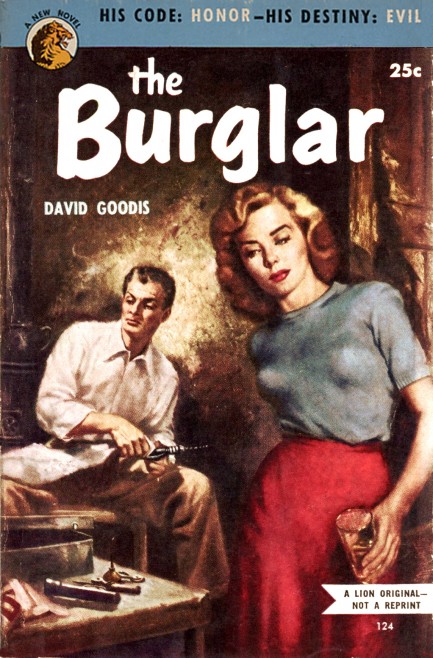
Yes, we read the novel The Burglar right after watching the movie. We could have done it the other way around, but this seemed to make more sense. We went into the book wondering if the movie's merits were due to director Paul Wendkos or author David Goodis. Turns out it was both. Goodis wrote the screenplay, and his adaptation reshapes several crucial elements. Primarily, the movie has police procedural elements the book doesn't, and a take on the problem of sexual harassment that feels very 2019. On the other hand, an aspect of the novel we're surprised survived is the relationship between Gladden (Jayne Mansfield in the film) and Harbin (Dan Duryea). In both book and film Harbin takes over parenting Gladden when her father is killed, making them father figure and quasi daughter. In the film Mansfield even calls Duryea her foster father. That's pretty provocative, considering she wants to make the eight-limbed mattress monster™ with him.
Overall, it's no surprise the novel became a movie—it's great. The emotional desperation of Harbin, Gladden, and the other woman Della (played by Martha Vickers in the film) verges on painful to endure as a reader. They latch onto each other with a ferocity that's only matched by a fourth character's deadly lust for the stolen jewels. All this intensity comes in addition to a brilliant plot set-up for the entire exercise. We don't know if we'll ever again pair movie watching with immediately reading the source material, but it was interesting this time. Did it take the fun out of the book, knowing what would happen? Not at all. Goodis's novel is different enough that we weren't actually sure what would happen. We owe this enjoyable read entirely to the Noirfest. We might have stumbled across the book randomly at some point, but without the movie to take us there, probably not.
Edit: Okay, we'll quit with the eight-limbed mattress monster™ bit. It was funny at first. You had to be there.
|
 |

The headlines that mattered yesteryear.
1945—Mussolini Is Arrested
Italian dictator Benito Mussolini, his mistress Clara Petacci, and fifteen supporters are arrested by Italian partisans in Dongo, Italy while attempting to escape the region in the wake of the collapse of Mussolini's fascist government. The next day, Mussolini and his mistress are both executed, along with most of the members of their group. Their bodies are then trucked to Milan where they are hung upside down on meathooks from the roof of a gas station, then spat upon and stoned until they are unrecognizable. 1933—The Gestapo Is Formed
The Geheime Staatspolizei, aka Gestapo, the official secret police force of Nazi Germany, is established. It begins under the administration of SS leader Heinrich Himmler in his position as Chief of German Police, but by 1939 is administered by the Reichssicherheitshauptamt, or Reich Main Security Office, and is a feared entity in every corner of Germany and beyond. 1937—Guernica Is Bombed
In Spain during the Spanish Civil War, the Basque town of Guernica is bombed by the German Luftwaffe, resulting in widespread destruction and casualties. The Basque government reports 1,654 people killed, while later research suggests far fewer deaths, but regardless, Guernica is viewed as an example of terror bombing and other countries learn that Nazi Germany is committed to that tactic. The bombing also becomes inspiration for Pablo Picasso, resulting in a protest painting that is not only his most famous work, but one the most important pieces of art ever produced. 1939—Batman Debuts
In Detective Comics #27, DC Comics publishes its second major superhero, Batman, who becomes one of the most popular comic book characters of all time, and then a popular camp television series starring Adam West, and lastly a multi-million dollar movie franchise starring Michael Keaton, then George Clooney, and finally Christian Bale. 1953—Crick and Watson Publish DNA Results
British scientists James D Watson and Francis Crick publish an article detailing their discovery of the existence and structure of deoxyribonucleic acid, or DNA, in Nature magazine. Their findings answer one of the oldest and most fundamental questions of biology, that of how living things reproduce themselves.
|

|
|

It's easy. We have an uploader that makes it a snap. Use it to submit your art, text, header, and subhead. Your post can be funny, serious, or anything in between, as long as it's vintage pulp. You'll get a byline and experience the fleeting pride of free authorship. We'll edit your post for typos, but the rest is up to you. Click here to give us your best shot.

|
|









 much of the inexperienced Mansfield, she hurts the final product little, because the movie comes across like a sneaky parody anyway. With one partner in Mickey Shaughnessy who's creepy and rapey, and another in Peter Capell who's as highly strung as a banjo, head crook Duryea has assembled by far the worst gang in film noir history. There's no thought—not even for a second—that these three are going to achieve their goals.
much of the inexperienced Mansfield, she hurts the final product little, because the movie comes across like a sneaky parody anyway. With one partner in Mickey Shaughnessy who's creepy and rapey, and another in Peter Capell who's as highly strung as a banjo, head crook Duryea has assembled by far the worst gang in film noir history. There's no thought—not even for a second—that these three are going to achieve their goals.












































































